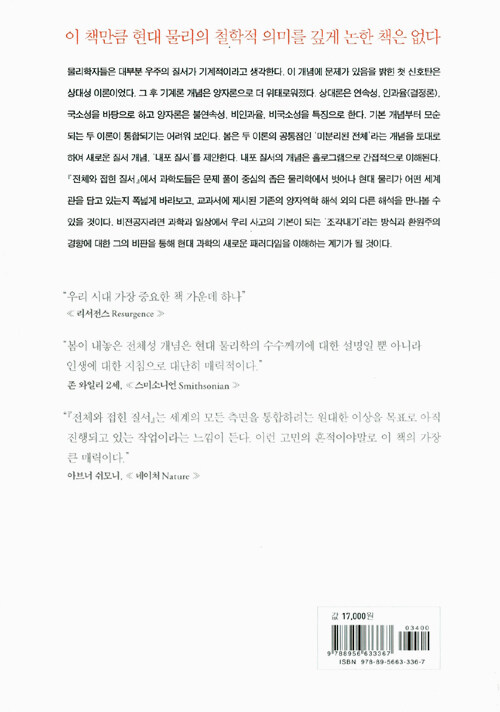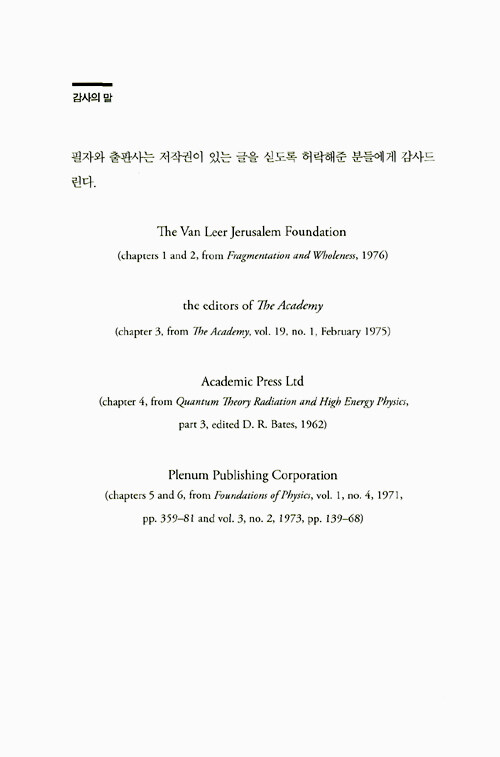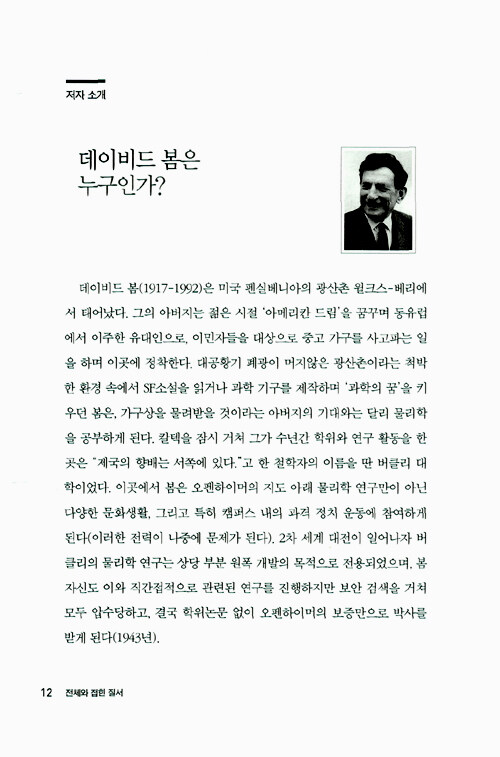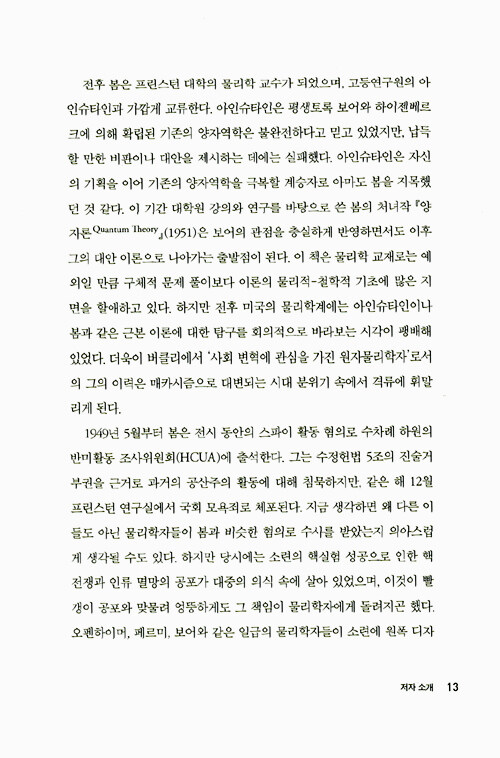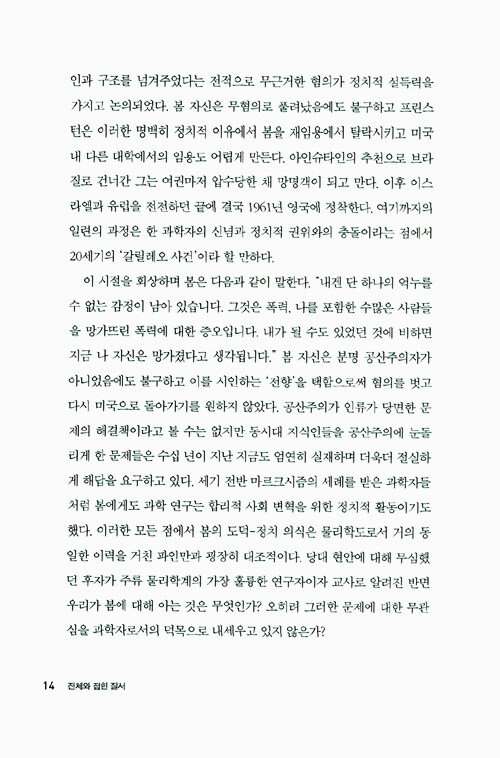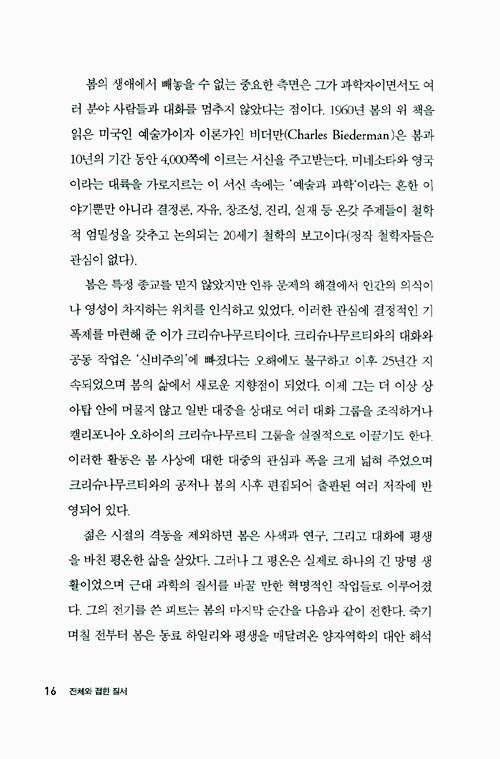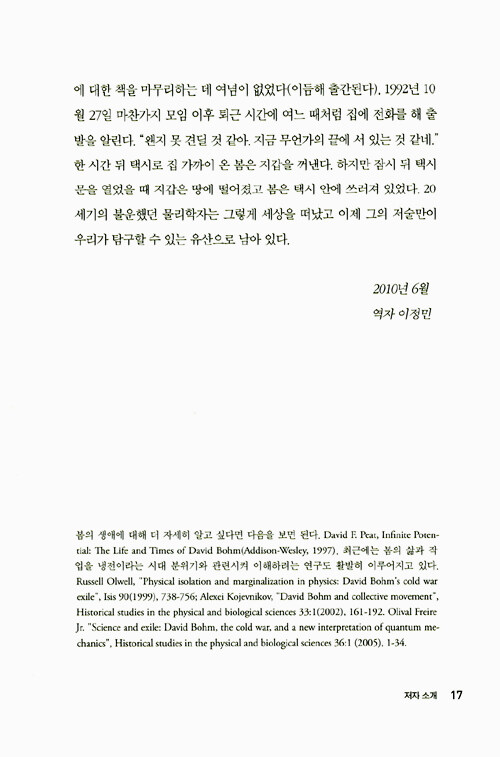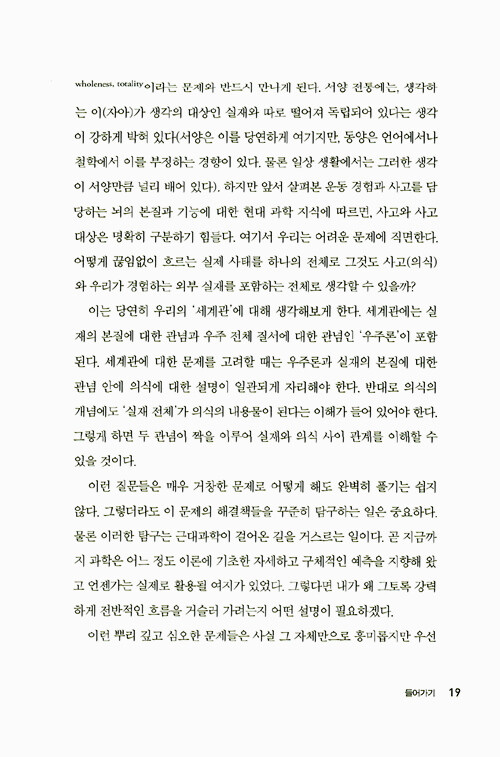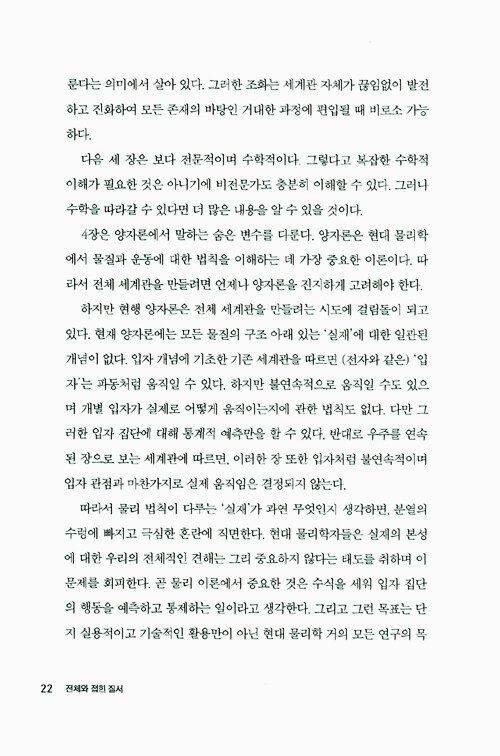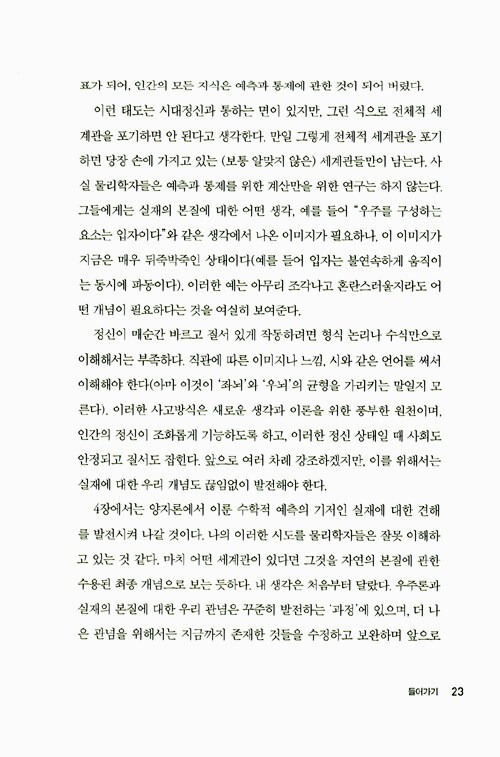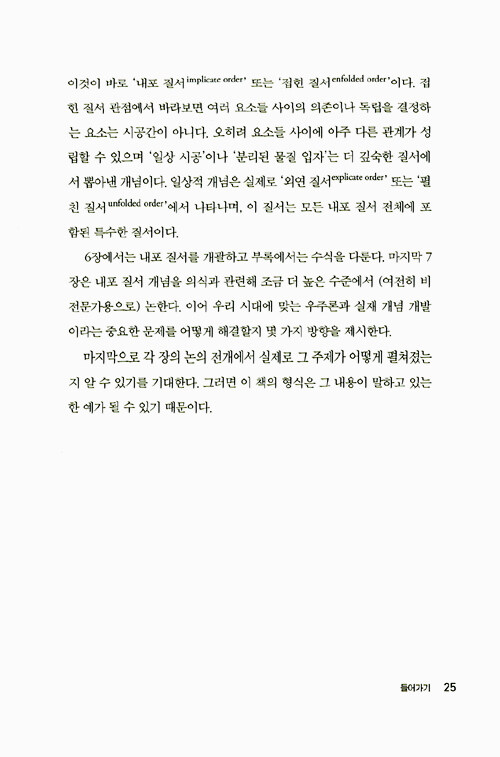Wholeness and the Implicate Order
First edition | |
| Author | David Bohm |
|---|---|
| Country | United Kingdom |
| Language | English |
| Subject | Science, Quantum mind |
| Publisher | Routledge |
Publication date | 1980 |
| ISBN | 0-203-99515-5 |
Wholeness and the Implicate Order is a book by theoretical physicist David Bohm. It was originally published in 1980 by Routledge, Great Britain.
The book is considered a basic reference for Bohm's concepts of undivided wholeness and of implicate and explicate orders, as well as of Bohm's rheomode - an experimental language based on verbs. The book is cited, for example, by philosopher Steven M. Rosen in his book The Self-evolving Cosmos,[1] by mathematician and theologian Kevin J. Sharpe in his book David Bohm's World,[2][3] by theologian Joseph P. Farrell in Babylon's Banksters,[4] and by theologian John C. Polkinghorne in his book One World.[5]
Chapters[edit]
- Fragmentation and wholeness
- The rheomode – an experiment with language and thought
- Reality and knowledge considered as process
- Hidden variables in the quantum theory
- Quantum theory as an indication of a new order in physics, Part A: The development of new orders as shown through the history of physics
- Quantum theory as an indication of a new order in physics, Part B: Implicate and explicate order in physical law
- The enfolding-unfolding universe and consciousness
References[edit]
- David Bohm: Wholeness and the Implicate Order, 1980, Routledge, ISBN 0-203-99515-5 (Master e-book ISBN, reprint 2005)
- ^ Steven M. Rosen (1 January 2008). The Self-evolving Cosmos: A Phenomenological Approach to Nature's Unity-in-diversity. World Scientific. p. 83. ISBN 978-981-277-174-2.
- ^ Kevin J. Sharpe. Relating the physics and religion of David Bohm
- ^ Kevin J. Sharpe: David Bohm's World: New Physics and New Religion, Bucknell University Press, 1993, ISBN 978-0838752395
- ^ Joseph P. Farrell (2010). Babylon's Banksters: The Alchemy of Deep Physics, High Finance and Ancient Religion. Feral House. pp. 211–216. ISBN 978-1-932595-79-6.
- ^ John C. Polkinghorne (30 June 2010). One World: The Interaction of Science and Theology. Templeton Foundation Press. p. 100. ISBN 978-1-59947-200-3.
See also[edit]
====Kindle
$25.50
Read with Our Free App
Paperback
$83.42

David Bohm was one of the foremost scientific thinkers and philosophers of our time. Although deeply influenced by Einstein, he was also, more unusually for a scientist, inspired by mysticism. Indeed, in the 1970s and 1980s he made contact with both J. Krishnamurti and the Dalai Lama whose teachings helped shape his work. In both science and philosophy, Bohm's main concern was with understanding the nature of reality in general and of consciousness in particular. In this classic work he develops a theory of quantum physics which treats the totality of existence as an unbroken whole.
Writing clearly and without technical jargon, he makes complex ideas accessible to anyone interested in the nature of reality.
----
Editorial Reviews
Review
'Bohm is a tremendously exciting thinker, and this is undoubtedly a book of the first importance.' - Colin Wilson
'One of the most important books of our times.' - Resurgence
About the Author
David Bohm (1917-92). Renowned physicist and theorist who was one of the most original thinkers of the second half of the twentieth century.
Product details
Publisher : Routledge; 1st edition (July 4, 2002)
Language : English
Paperback : 284 pages
#139 in Consciousness & Thought Philosophy
#378 in History & Philosophy of Science (Books)Customer Reviews:
4.6 out of 5 stars 307 ratings
Top reviews from the United States

Filip Sanna
5.0 out of 5 stars Beautiful and creative thinkingReviewed in the United States on April 9, 2020
Verified Purchase
I rarely take the time to write reviews, but forty years after its publication, this book deserves to be far more widely read and referenced. It has tremendous implications for our understanding of science and consciousness. Even for a non-scientist, like myself, it offers a profoundly different way to understand what is going on in my own mind and direct experience.
The author was a peer to the great physicists of the twentieth century, and made numerous important contributions to the intellectual edifice of that field. Sadly, due to his interest in Marxist ideas he was persecuted by the ardent anti-communists of the 1950’s (HUAC) and basically driven out of the US. Later in his career, he again defied the strict norms of the traditional physics community by engaging in extensive dialog with the Indian philosopher J Krishnamurthi. In a less conformist era or community, his ideas likely would have gained much wider and more serious traction. It is well past time for a fresh look at his amazing insights.
Although this book has some technical content, his writing is extraordinarily clear and precise. I did give up on Chapter 4 about halfway through, as the math was simply beyond me. But as far as I can tell, nothing in chapter 4 is critical to the overall thesis of the book. One could go straight from chapter 3 to 5 without losing any comprehension or appreciation for the depth and subtlety of Bohm’s arguments.
His first critical point comes on page 4, where he points out our tendency to conflate thinking about things with direct experience itself, or as he states: “our thought is regarded as in direct correspondence with objective reality.” The result is that any dominant way of seeing the world becomes at once both largely unconscious and a self-fulfilling prophecy. Bohm argues that in order to properly understand reality, we must “be aware of the activity of thought as such; i.e. as a form of insight, a way of looking, rather than a ‘true copy of reality as it is’.”
Bohm uses the term “fragmentation” to describe the traditional Western paradigm for understanding physical reality, going back at least to the Greeks. Fragmentation has several manifestations. In academic fields, it manifests as the continual division of fields into specialities and sub-specialities. In society, people are “broken up into separate nations and different religious, political, economic, racial groups, etc.” And in physics, we have come to regard “as an absolute truth the notion that the whole of reality is actually constituted of nothing but ‘atomic building blocks’, all working together more or less mechanically.” Over time, this fragmentary worldview and the resulting empirical data have circularly reinforced each other. Obviously, the associated theories have led to many great and useful insights. But we should not lose sight of the fact that “all our different ways of thinking are to be considered as different ways of looking at the one reality, each with some domain in which it is clear and accurate.” An overly fundamentalist application of the fragmentary worldview is blinding us to see larger (or at least alternative orders) in the nature of reality and of consciousness.
He then goes on to show that both relativity and the quantum theory “show that the attempt to describe and follow an atomic particle in precise detail has little meaning.” Instead, “it can perhaps best be regarded as a poorly defined cloud, dependent for its particular form on the whole environment, including the observing instrument.” He offers an alternative analogy for thinking about relatively stable and autonomous “objects” and how they relate to the broader environment: as vortices in a flowing stream (think of whirlpools in a fast-flowing brook). Viewed in a certain way, such a vortex might appear to be quite consistent and independent of other features appearing elsewhere in the stream. And yet, without the overall flow of water, these seemingly independent “things” would instantly disappear. Bohm offers a “proposal for a new general form of insight…That is, there is a universal flux that cannot be defined explicitly but which can only be known implicitly, as indicated by the explicitly definable forms and shapes, some stable and some unstable, that can be abstracted from the universal flux. In this flow, mind and matter are not separate substances. Rather, they are different aspects of one whole and unbroken movement.”
All of what I’ve described is laid out in the first 14 pages! He goes on to describe and illustrate his thesis with penetrating analyses of language, key unresolved questions in physics, the nature of time, and various mathematical paradoxes. The logic is crisp and internally consistent. The breadth of both his scholarship and the conceptual landscape he covers are tremendous. In the end, he offers a whole new way to conceive of physical reality and consciousness. And although he doesn’t mention it, this alternative worldview has much in common with Eastern philosophy and the reports of mystics from all sorts of religious traditions.
In short, this book provides profound insights into most of the great unanswered questions: what is consciousness?, what is time?, what is the nature of physical reality?, and so on.
69 people found this helpful
HelpfulReport abuse

Ian J. Miller
4.0 out of 5 stars fragmented wholenessReviewed in the United States on June 5, 2012
Verified Purchase
This is an unusual book. Bohm was one of the deeper thinkers, and this book is a challenge to many generally prevailing views. The book commences with the concept that a theory is an insight. Bohm points out that for convenience we subdivide our studies, but then ends up with the problem that this fragmentation has led to many of today's problems, where we do not consider the outcomes (e.g. pollution) of what we do. Accordingly, his solution is to give primacy to everything as a whole. One problem with this book is that he tends to leap from one place to another, with no obvious connection, then leave it. In chapter two, he outlines what he calls the rheomode, a way of modifying words to give more precise meanings. Later, to illustrate implicate order, he gives a mathematical treatment of what he calls a metamorphosis using a hologram as an example. The problem here is, anyone unfamiliar with Green's theorem will find this incomprehensible, and at least some of those who have some comprehension will wonder why that is there. Neither these metamorphoses nor rheomodes are used subsequently.
The book is a little like a hypercurate's egg. Bohm is very strong on noting problems with standard physics, and his statements regarding the inherent contradictory, and in some formulations, self-contradictory aspects of relativity and quantum mechanics are by themselves worth the price of the book. On the other hand, he then seems to state that each implies a whole, but I am not sure where that comes from. I bought the book to see from where Bohm got his concept of a quantum potential, which, in some ways seems non-physical. Unfortunately, it is just put there, without any particular explanation. Worse, it is little better than an unsupported proposition because by his own admission, it does not predict anything. Oddly, while Bohm is noted for what is generally called pilot wave theory, this is omitted. There is a chapter on hidden variables, but frustratingly, he avoids stating clearly what he means by a hidden variable. (For example, is motion in a dimension we cannot access a hidden variable?)
Then comes a section where he shows why action is quantized, and from this he arrives at the Uncertainty Principle in a way that leaves standard textbooks dead. This is excellent, but not the stuff for undergraduate physics. It is also where I show my bias - I prefer to think the argument for why action is quantized should be the other way around (i.e. not if A, then B, but rather if B, then A and also....) but that is for other readers to consider. The book then covers further quantum theory, and tries to take this through, with relativity, to a whole, an implicate order. In my opinion, he goes too far, but if nothing else he is interesting.
He then goes on to consider the whole. Bohm quotes Aristotle as the original holistic thinker, and claims he thought of everything as an organism. In a chapter of my ebook I discuss this issue: it is not clear exactly what Aristotle meant because he wrote in ancient Greek, and I have to rely on translations, but my interpretation is that the whole can be equated with our complete set. When Aristotle wrote the whole is more than the sum of the parts, I interpret that as the set comprises the elements (the parts) plus the rule that conveys set membership. From this you can develop mathematical logic, and Aristotle invented logic, almost completely. Bohm spends a lot of time arguing about the meaning or words, but for some reason he avoided this. The difference is very significant.
To summarize, if the reader wants facts, this is not the book for you. If you want insight, it can be frustrating. If you want your mind expanded, to think about things that otherwise you may not have considered, if you want to see into a deep mind, and if you have some understanding of physics, then this is a very important book.
15 people found this helpful
HelpfulReport abuse

R. Whelan
5.0 out of 5 stars the new approach to physicsReviewed in the United States on October 31, 2022
Verified Purchase
An astounding original thought-bank for understanding reality. A must read. I had no idea I would be so moved and challenged by this book. Thought I was just getting another amusing reference. Just, Wow.
One person found this helpful
HelpfulReport abuse
See all reviews
Top reviews from other countries

Mrs. Judith Lugg
5.0 out of 5 stars OVERWHELMINGLY FASCINATINGReviewed in the United Kingdom on December 1, 2013
Verified Purchase
As others have said, this is not an easy read - I am not a physicist, nevertheless, I WAS able to 'get my head around' the concepts being presented here.
I feel that this book should be read by as many people as possible - the concepts contained therein are infinitely fascinating and point to a different way of understanding that which now seems to be un-intelligible because of the very way in which we approach it. Our current way of thinking that everything is fragmented and separate leads to great misconceptions and if only we can grasp the fact that utterly everything is connected we shall have come a long way along the road to a deeper knowledge of all that is.
In other words, we could come to see the great wholeness that is everything.
19 people found this helpfulReport abuse

Amazon Kunde
5.0 out of 5 stars Probably Bohm's most important bookReviewed in the United Kingdom on August 13, 2021
Verified Purchase
You'll get a more deeper understanding of his ideas here. It might be at times "technical" but it's worth going through it and dedicating time and attention to properly understand what he's talking about.
Love the book.
2 people found this helpfulReport abuse

PC
5.0 out of 5 stars A discourse on wholeness.Reviewed in the United Kingdom on July 31, 2020
Verified Purchase
On the wings of the spirit of Plotinus. A search for wholeness and the cascading intellectual fruits as it is approached.
One person found this helpfulReport abuse

Jo
4.0 out of 5 stars What a read!Reviewed in the United Kingdom on September 8, 2011
Verified Purchase
What a read! Both in terms of difficulty (even forgetting the maths!) and the concepts discussed.
Mr Bohm's name is deservedly uttered in the same breath as the likes of Newton, Einstein et al. and I'm not surprised that his ideas have brought about a paradigm shift in scientific thinking. The subject he tackles in this book is a big one: the universe and our place in it. This is not an easy read as he deals with abstract concepts like thought, knowledge, intelligence etc., and you may find yourself reading and re-reading chapter after chapter, but persevere....this book has answers to big questions!
11 people found this helpfulReport abuse

Amazon Customer
5.0 out of 5 stars Fascinating insightReviewed in the United Kingdom on October 8, 2021
Verified Purchase
Really enjoying this book! As a physics student, this offers an alternative view of the universe that makes absolute sense.
Report abuse
----
Editorial Reviews
Review
'Bohm is a tremendously exciting thinker, and this is undoubtedly a book of the first importance.' - Colin Wilson
'One of the most important books of our times.' - Resurgence
About the Author
David Bohm (1917-92). Renowned physicist and theorist who was one of the most original thinkers of the second half of the twentieth century.
Product details
Publisher : Routledge; 1st edition (July 4, 2002)
Language : English
Paperback : 284 pages
#139 in Consciousness & Thought Philosophy
#378 in History & Philosophy of Science (Books)Customer Reviews:
4.6 out of 5 stars 307 ratings
Top reviews from the United States
Filip Sanna
5.0 out of 5 stars Beautiful and creative thinkingReviewed in the United States on April 9, 2020
Verified Purchase
I rarely take the time to write reviews, but forty years after its publication, this book deserves to be far more widely read and referenced. It has tremendous implications for our understanding of science and consciousness. Even for a non-scientist, like myself, it offers a profoundly different way to understand what is going on in my own mind and direct experience.
The author was a peer to the great physicists of the twentieth century, and made numerous important contributions to the intellectual edifice of that field. Sadly, due to his interest in Marxist ideas he was persecuted by the ardent anti-communists of the 1950’s (HUAC) and basically driven out of the US. Later in his career, he again defied the strict norms of the traditional physics community by engaging in extensive dialog with the Indian philosopher J Krishnamurthi. In a less conformist era or community, his ideas likely would have gained much wider and more serious traction. It is well past time for a fresh look at his amazing insights.
Although this book has some technical content, his writing is extraordinarily clear and precise. I did give up on Chapter 4 about halfway through, as the math was simply beyond me. But as far as I can tell, nothing in chapter 4 is critical to the overall thesis of the book. One could go straight from chapter 3 to 5 without losing any comprehension or appreciation for the depth and subtlety of Bohm’s arguments.
His first critical point comes on page 4, where he points out our tendency to conflate thinking about things with direct experience itself, or as he states: “our thought is regarded as in direct correspondence with objective reality.” The result is that any dominant way of seeing the world becomes at once both largely unconscious and a self-fulfilling prophecy. Bohm argues that in order to properly understand reality, we must “be aware of the activity of thought as such; i.e. as a form of insight, a way of looking, rather than a ‘true copy of reality as it is’.”
Bohm uses the term “fragmentation” to describe the traditional Western paradigm for understanding physical reality, going back at least to the Greeks. Fragmentation has several manifestations. In academic fields, it manifests as the continual division of fields into specialities and sub-specialities. In society, people are “broken up into separate nations and different religious, political, economic, racial groups, etc.” And in physics, we have come to regard “as an absolute truth the notion that the whole of reality is actually constituted of nothing but ‘atomic building blocks’, all working together more or less mechanically.” Over time, this fragmentary worldview and the resulting empirical data have circularly reinforced each other. Obviously, the associated theories have led to many great and useful insights. But we should not lose sight of the fact that “all our different ways of thinking are to be considered as different ways of looking at the one reality, each with some domain in which it is clear and accurate.” An overly fundamentalist application of the fragmentary worldview is blinding us to see larger (or at least alternative orders) in the nature of reality and of consciousness.
He then goes on to show that both relativity and the quantum theory “show that the attempt to describe and follow an atomic particle in precise detail has little meaning.” Instead, “it can perhaps best be regarded as a poorly defined cloud, dependent for its particular form on the whole environment, including the observing instrument.” He offers an alternative analogy for thinking about relatively stable and autonomous “objects” and how they relate to the broader environment: as vortices in a flowing stream (think of whirlpools in a fast-flowing brook). Viewed in a certain way, such a vortex might appear to be quite consistent and independent of other features appearing elsewhere in the stream. And yet, without the overall flow of water, these seemingly independent “things” would instantly disappear. Bohm offers a “proposal for a new general form of insight…That is, there is a universal flux that cannot be defined explicitly but which can only be known implicitly, as indicated by the explicitly definable forms and shapes, some stable and some unstable, that can be abstracted from the universal flux. In this flow, mind and matter are not separate substances. Rather, they are different aspects of one whole and unbroken movement.”
All of what I’ve described is laid out in the first 14 pages! He goes on to describe and illustrate his thesis with penetrating analyses of language, key unresolved questions in physics, the nature of time, and various mathematical paradoxes. The logic is crisp and internally consistent. The breadth of both his scholarship and the conceptual landscape he covers are tremendous. In the end, he offers a whole new way to conceive of physical reality and consciousness. And although he doesn’t mention it, this alternative worldview has much in common with Eastern philosophy and the reports of mystics from all sorts of religious traditions.
In short, this book provides profound insights into most of the great unanswered questions: what is consciousness?, what is time?, what is the nature of physical reality?, and so on.
69 people found this helpful
HelpfulReport abuse
Ian J. Miller
4.0 out of 5 stars fragmented wholenessReviewed in the United States on June 5, 2012
Verified Purchase
This is an unusual book. Bohm was one of the deeper thinkers, and this book is a challenge to many generally prevailing views. The book commences with the concept that a theory is an insight. Bohm points out that for convenience we subdivide our studies, but then ends up with the problem that this fragmentation has led to many of today's problems, where we do not consider the outcomes (e.g. pollution) of what we do. Accordingly, his solution is to give primacy to everything as a whole. One problem with this book is that he tends to leap from one place to another, with no obvious connection, then leave it. In chapter two, he outlines what he calls the rheomode, a way of modifying words to give more precise meanings. Later, to illustrate implicate order, he gives a mathematical treatment of what he calls a metamorphosis using a hologram as an example. The problem here is, anyone unfamiliar with Green's theorem will find this incomprehensible, and at least some of those who have some comprehension will wonder why that is there. Neither these metamorphoses nor rheomodes are used subsequently.
The book is a little like a hypercurate's egg. Bohm is very strong on noting problems with standard physics, and his statements regarding the inherent contradictory, and in some formulations, self-contradictory aspects of relativity and quantum mechanics are by themselves worth the price of the book. On the other hand, he then seems to state that each implies a whole, but I am not sure where that comes from. I bought the book to see from where Bohm got his concept of a quantum potential, which, in some ways seems non-physical. Unfortunately, it is just put there, without any particular explanation. Worse, it is little better than an unsupported proposition because by his own admission, it does not predict anything. Oddly, while Bohm is noted for what is generally called pilot wave theory, this is omitted. There is a chapter on hidden variables, but frustratingly, he avoids stating clearly what he means by a hidden variable. (For example, is motion in a dimension we cannot access a hidden variable?)
Then comes a section where he shows why action is quantized, and from this he arrives at the Uncertainty Principle in a way that leaves standard textbooks dead. This is excellent, but not the stuff for undergraduate physics. It is also where I show my bias - I prefer to think the argument for why action is quantized should be the other way around (i.e. not if A, then B, but rather if B, then A and also....) but that is for other readers to consider. The book then covers further quantum theory, and tries to take this through, with relativity, to a whole, an implicate order. In my opinion, he goes too far, but if nothing else he is interesting.
He then goes on to consider the whole. Bohm quotes Aristotle as the original holistic thinker, and claims he thought of everything as an organism. In a chapter of my ebook I discuss this issue: it is not clear exactly what Aristotle meant because he wrote in ancient Greek, and I have to rely on translations, but my interpretation is that the whole can be equated with our complete set. When Aristotle wrote the whole is more than the sum of the parts, I interpret that as the set comprises the elements (the parts) plus the rule that conveys set membership. From this you can develop mathematical logic, and Aristotle invented logic, almost completely. Bohm spends a lot of time arguing about the meaning or words, but for some reason he avoided this. The difference is very significant.
To summarize, if the reader wants facts, this is not the book for you. If you want insight, it can be frustrating. If you want your mind expanded, to think about things that otherwise you may not have considered, if you want to see into a deep mind, and if you have some understanding of physics, then this is a very important book.
15 people found this helpful
HelpfulReport abuse
R. Whelan
5.0 out of 5 stars the new approach to physicsReviewed in the United States on October 31, 2022
Verified Purchase
An astounding original thought-bank for understanding reality. A must read. I had no idea I would be so moved and challenged by this book. Thought I was just getting another amusing reference. Just, Wow.
One person found this helpful
HelpfulReport abuse
See all reviews
Top reviews from other countries
Mrs. Judith Lugg
5.0 out of 5 stars OVERWHELMINGLY FASCINATINGReviewed in the United Kingdom on December 1, 2013
Verified Purchase
As others have said, this is not an easy read - I am not a physicist, nevertheless, I WAS able to 'get my head around' the concepts being presented here.
I feel that this book should be read by as many people as possible - the concepts contained therein are infinitely fascinating and point to a different way of understanding that which now seems to be un-intelligible because of the very way in which we approach it. Our current way of thinking that everything is fragmented and separate leads to great misconceptions and if only we can grasp the fact that utterly everything is connected we shall have come a long way along the road to a deeper knowledge of all that is.
In other words, we could come to see the great wholeness that is everything.
19 people found this helpfulReport abuse
Amazon Kunde
5.0 out of 5 stars Probably Bohm's most important bookReviewed in the United Kingdom on August 13, 2021
Verified Purchase
You'll get a more deeper understanding of his ideas here. It might be at times "technical" but it's worth going through it and dedicating time and attention to properly understand what he's talking about.
Love the book.
2 people found this helpfulReport abuse
PC
5.0 out of 5 stars A discourse on wholeness.Reviewed in the United Kingdom on July 31, 2020
Verified Purchase
On the wings of the spirit of Plotinus. A search for wholeness and the cascading intellectual fruits as it is approached.
One person found this helpfulReport abuse
Jo
4.0 out of 5 stars What a read!Reviewed in the United Kingdom on September 8, 2011
Verified Purchase
What a read! Both in terms of difficulty (even forgetting the maths!) and the concepts discussed.
Mr Bohm's name is deservedly uttered in the same breath as the likes of Newton, Einstein et al. and I'm not surprised that his ideas have brought about a paradigm shift in scientific thinking. The subject he tackles in this book is a big one: the universe and our place in it. This is not an easy read as he deals with abstract concepts like thought, knowledge, intelligence etc., and you may find yourself reading and re-reading chapter after chapter, but persevere....this book has answers to big questions!
11 people found this helpfulReport abuse
Amazon Customer
5.0 out of 5 stars Fascinating insightReviewed in the United Kingdom on October 8, 2021
Verified Purchase
Really enjoying this book! As a physics student, this offers an alternative view of the universe that makes absolute sense.
Report abuse
===
===
Displaying 1 - 10 of 97 reviews
Profile Image for E. G..
E. G.
1,106 reviews
·
663 followers
Follow
December 18, 2017
Acknowledgments
Introduction
--Fragmentation and wholeness
Appendix: Résumé of discussion on Western and Eastern forms of insight into wholeness
--The rheomode - an experiment with language and thought
--Reality and knowledge considered as process
--Hidden variables in the quantum theory
Quantum theory as an indication of a new order in physics:
--Part A: The development of new orders as shown through the history of physics
--Part B: Implicate and explicate order in physical law
Appendix: implicate and explicate order in physical law
--The enfolding-unfolding universe and consciousness
Notes
Index
4-star
essays
non-fiction
...more
31 likes
1 comment
Like
Comment
Profile Image for Mengsen Zhang.
Mengsen Zhang
72 reviews
·
23 followers
Follow
May 30, 2014
I love this man! Like an old friend giving you guidance of how you should proceed with your science to understand what you're trying to understand about the universe. No book ever speaks to my heart like this one. Every sentence says that he knows exactly what I want, and what I'm not confident about being able to grasp. The "rheomode" of language use he proposed, that is to turn adjectives back their original verb form, is a great way to organize thoughts and reduce confusion. Chapter 5 and 6 gives clear formal exposition what does it mean by hidden variables--critical guide for scientists who cares about the dynamic of being. The the final magnificent passages are more romantic - time, space, consciousness, movement and continuity. Interestingly, he's the first man I read who gave fair comments about Descartes. Apparently, he didn't label Descartes as a murderer of the wholeness but rather a proponent. I feel assured. Maybe indeed, as he said, the wholeness is the way you look at things. The hologram is implicated itself, and the explicit understanding of the text is what mirrors my perspective. Different readers unfold a different mind from the same pages.
23 likes
3 comments
Like
Comment
Profile Image for Andrew Gillsmith.
Andrew Gillsmith
2 books
·
145 followers
Follow
August 24, 2022
Bohm is arguably the most under-appreciated--and original--thinker in mid 20th century quantum physics. Lest that come across as damning with faint praise, consider his contemporaries: Bohr, Heisenberg, von Neumann, Dirac, Einstein, Feynmann, Wheeler, et al. Nearly all of them have left a profound mark on our modern, physical understanding of reality. Bohm's work, by contrast, seems to have been largely ignored or forgotten.
Perhaps this is because he developed an "unwholesome" appetite for ontology (and metaphysics) and, unlike some of his colleagues, was intellectually honest enough to pursue his interests to their often bizarre, mesmerizing conclusions.
In Wholeness and the Implicate Order, Bohm succinctly lays out his thesis of the undivided nature of reality. Beyond the quantum realm, Bohm believes there exist other orders--implicate, superimplicate, and generative--from which our experience of both consciousness and reality (the same thing, really) emerge.
This book is less technical than some of Bohm's other writings, so it is a good starting point for those interested in his approach. That said, do not expect "enlightenment" here. Like everyone else in the field, Bohm confesses to a limited understanding of quantum mechanics. Ultimately, his theories concerning the underlying, sub-quantum orders are a kind of poetry or metaphor.
And perhaps that is precisely what Bohm intended.
19 likes
Like
Comment
Profile Image for Alex Lee.
Alex Lee
894 reviews
·
103 followers
Follow
June 9, 2016
Bohm approaches a Deleuzian concept of fold through physics alone. In tracing the development of quantum mechanics from general relativity, he points out the added concepts (explicate order) that characterize physics today. These added concepts are invisible, and thus modify the data to lead to confusing questions about the physical nature of reality.
Bohm's approach leads him very close to Barad in his critique of quantum mechanics interpretations and towards agential realism in how cuts and metrics can emerge from the "universe measuring itself" as Barad would say.
Barad however is far closer to philosophy than Bohm. What amazes me about Bohm is that he is able to say the same thing in less words (with less extension) but from a view building out of the mechanics of physics itself.
Having read the others above, including some philosophers of science, I must say that Bohm is not startling for his conclusions but he is startling in that he presents his own approach to get to that conclusion. His notions of "implicate order" is particular interesting as the cut between implicate and explicate seem wholly his own. Very useful concepts.
If you love reading about the intersection of philosophy, consciousness, math and science you should read this book. Its not that big but it is highly ambitious and extremely clear.
2016
impressive
mathematics
...more
12 likes
Like
Comment
Alyssa
31 reviews
·
3 followers
Follow
March 10, 2012
This book is basically 1/3 physics, 1/3 semantics and linguistics, and 1/3 philosophy. If you aren't interested in all three, it's probably not the book for you. And yes, there is some math in it, but it's really not that much outside of one appendix, and most of it is algebra. You can ignore it and still understand most of the book. You do have to have some patience and an IQ higher than that of a carrot to get through it, but even if you only grasp 2/3rds of the content, it's worth the effort.
11 likes
----
Othy
278 reviews
·
21 followers
Follow
April 19, 2010
Perhaps one of the most unfounded books I have ever read. Bohm's goal to cure the world from its 'fragmentation' is a good one, and comes from a good place, but both his ideas of culture and reality as well as his mode of presentation and argumentation are that of a middle-schooler. For instance, Bohm takes Greece (and therefore Rome as well) to represent all of the 'West' and ancient India to represent all of the 'East.' From a single examination of a single word in both of these cultures, he then decides that the Eastern idea of measure is better than the Western, and therefore that the East is better than the West. Bohm frequently ignores counter-evidence in his arguments, such as the two thousand years of strict Chinese scholar culture when discussing how the East has been (since the beginning of human society) non-conformist in its education. He also ignores, when pinning the West as ignorant of the immeasurable, religion, and philosophy, ALL Western religions, both Christian and non-Christian. To sum up his argument on measures, he writes "Thus, in the West, society has mainly emphasized the development of science nad technology (dependant on measure) while in the East, the main emphasis has gone to religion and philosophy (which are directed ultimately toward the immeasurable). If one considers this question carefully, one can see that in a certain sense the East was right to see the immeasurale as the primary reality." The East was right! Well! I wasn't aware that we were up to such childish games as 'right' and 'wrong!'
And that's just the first chapter. I got through only a few more pages of the second (where Bohm makes more wild guesses at existence by saying things like 'all modern languages have a subject-verb-object structure') as it is obvious that Bohm has a very small and biased view of reality and history. Arguments based on such poor knowledge have no weight and really come to be unreadable.
Don't waste your time with this book. There are many other interesting pieces of literature that go into these ideas, and by reading this book (in my opinion) you will either be giving yourself a bias against other authors or swallowing information that has no foundation in reality. If I could give this book negative stars, I would.
7 likes
6 comments
===
Julian Worker
32 books
·
337 followers
Follow
December 29, 2020
This is a difficult book to read and understand.
When I read books like this, I am thankful that scientists such as Brian Cox, Frank Close, and Michio Kaku are able to explain difficult concepts so clearly in their books. Indeed, it would be fun if any one of these three authors could translate David Bohm's ideas into language understood by people like me.
I am sure there are some great ideas in this book, but I might have missed them. In case you were wondering, by implicate order the author means enfolded structures such as the order the images are sent in for a TV program.
6 likes
2 comments
===
James
373 reviews
·
19 followers
Follow
August 3, 2019
Wholeness and the Implicate Order proposes a new model of reality. Professor Bohm argues that if we are guided by a self-willed view, we will perceive and experience the world as fragmented. Such a view is false because it is based on our mistaking the content of our thought for a description of the world as it is. Bohm introduces the notion of the implicate order in which any element contains enfolded within itself the totality of the universe--his concept of totality (wholeness) includes both matter and consciousness.
The central underlying theme is the unbroken wholeness of the totality of existence as an undivided flowing movement without barriers. The principal feature of the mechanical order is that the world is regarded as constituted entities which are outside of each other-- the order of the universe is mechanistic. No coherent concept of an independently existent particle is possible, neither one in which the particle ould be n extended body, nor one in which it would be a dimensionless point. The non-local, non-causal nature of the relationships of elements distant from one another violates the requirements of separateness and independence of fundamental constituents that is basic to any mechanistic approach (pp. 175-6).
The hologram maks a photographic record of the interference pattern of light waves that come off an object. The key new feature of this record is that each part contains information about the whole object, so there is no point-to-point correspondence of object and recorded image. The form and structure of the entire object may be said to be enfolded within each region of the photographic record.
A new notion of order is involved here, called the implicate order from a Latin root meaning 'to enfold' or 'fold inward.' Everything is enfolded into everything in the implicate order. The hologram is a static record of this order. In the explicate order, things are unfolded as each thing lies only in is own particular region of space and time, and outside the regions belonging to other things. This enfoldment and unfoldment take place in the movement of the electromagnetic field, and other fields such as the electronic, protonic, sound waves, etc. The totality of the movement of enfoldment and unfoldment is holomovement. In the holomovement, the overall necessity is holonomy, but its laws are no longer mechanical.
The implicate order has its ground in the holomovement which is vast, rich, and in a state of unending flux of enfoldment and unfoldment. The implicate order extends into a multidimensional reality. Movement is comprehended in terms of a series of inter-penetrating and intermingling elements in different degrees of enfoldment; all present together.
_openings
philosophy-cosmology-metaphysics
science
5 likes
1 comment
===
Sangcheol
1 review
·
21 followers
Follow
October 19, 2011
Undivided wholeness and flowing movement, Bohm's core concept that encompasses the whole content of this amazing work. Bohm starts from examining the historial development of "fragmentation" which emphasized a certain aspect of measurement of reality, and equated our representation as perfect correspondence with what we treat as independent of reality.
However, what Bohm suggested as a remedy to fragmentation seems quite unclear. He mentioned that "integration" is impossible due to the finity of our mind, but he said we should examining as many aspects of reality as possible to see something as a whole. What's the difference? What I understood as integration definitely starts from bootstrapping a simple idea to build up a great idea, incorporating various aspects to resolve the discrepancies and contradictions among partial observations. In other words, we need "fragmentation" to perceive the whole.
What I mentioned is only a little portion of Bohm's idea. He also suggested "rheomode" of language to save ourselves from static perspective of this universe and I concur to the point. This book is so rich of his ideas to remedy the "finiteness" and "fragmentedness" of human mind, which might be our inevitable nature we have to accept as our subject-reality as well.
5 likes
Like
Comment
Profile Image for Rob.
Rob
86 reviews
·
83 followers
Follow
December 4, 2009
the monumental achievements of modern physics have been based upon (or, "have led to"?) a certain worldview - that the universe is made of entities that can be broken up into elementary constituent parts, and Everything That Happens is made up of interactions between these entities. unfortunately, as with a great many ideas, as time passes and the application of this viewpoint to various avenues of investigation meets with success after success, people come to believe that the reason for this success must be that the concept is a True representation of Reality, and not simply an efficient and practical set of techniques for operating in a certain limited domain.
bohm mastered quantum mechanics and relativity in the 1950s, spent a bunch of time hanging out with einstein and feynman and those sorts of people, and then stepped back and tried to figure out why the two revolutionary advances in 20th century physics have proved so difficult to reconcile. is nature telling us that we are missing something?
this book makes a case for wholeness, and against fragmentation. quantum entanglement hints that entities which appear to be isolated from each other are still connected. relativity tells us that there can be no such thing as an extended rigid body, which led particle physicists to posit that the elementary particles are extensionless points, but this then leads to infinite fields and other infinities in calculations. so they muddle along, sweeping mathematical absurdities under a carpet called renormalization.
but seeing physics in a holistic way is totally alien to modern science, and smacks of new-age non-scientific drivel. it led to bohm being ostracised from the physics world, although he has always maintained a small band of ardent supporters. there is no doubt that physics has been in crisis for at least a generation, until finally today one sees a veritable explosion of "crazy" ideas actually seeing the light of day in "respectable" fora, although sadly bohm didn't live to see it.
there is a certain tone in the way david bohm communicates that is difficult for me to describe, but i love it. it is genius, and gentleness, and kindness, and carefulness. how can one write about quantum mechanics with gentleness and kindness? i don't know, but david bohm did.
non-fiction-for-egghead-spacealiens
4 likes
1 comment
Like
Comment
Displaying 1 - 10 of 97 reviews
More reviews and ratings


